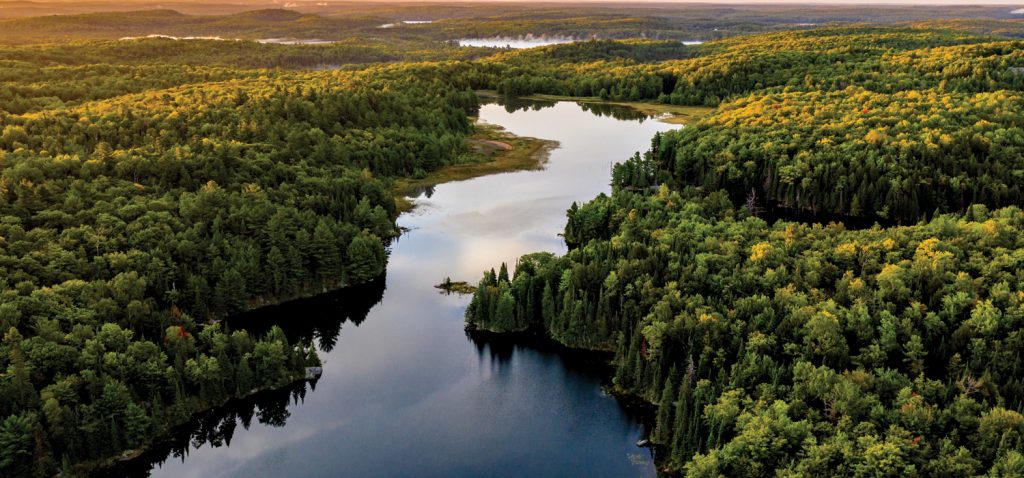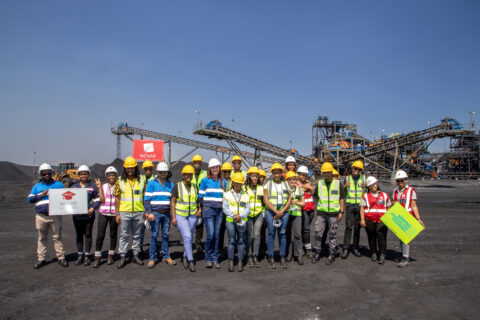SA Mining
Advancing The Green Agenda
In 2016 South Africa penned its signature to the Paris Agreement, which committed to reducing its greenhouse gas emissions to well below 2°C and pursuing efforts to limit it to 1.5°C.
More recently, the Minerals Council South Africa lent its weight to the Paris Climate Change Agreement ambition of net zero greenhouse gas emissions by 2050.
But exactly how well placed is South Africa in meeting these targets? SA Mining recently caught up with the Federation for a Sustainable Environment’s (FSE) Mariette Liefferink to chat about some of the key environmental concerns currently facing the country and the measures in place to resolve them.
According to Liefferink, while South Africa has many initiatives in play to move to a low carbon economy, it remains plagued by numerous issues, including its heavy reliance on coal as an energy source. South Africa currently sources more than 80% of its energy from fossil fuels; but according to the country’s Energy Master Plan, coal reliance is set to decline to around 43% of the energy mix by 2030.
The country is also challenged as it attempts to meet its Sustainable Development Goals (SDGs) by 2030, in particular SDG6, which targets the availability and sustainable management of water and sanitation for all.
According to the World Bank’s preliminary findings on South Africa’s infrastructure needs and ability to achieve the SDG6 goal, the water efficiency target of 175 litres per capita per day was unlikely to be reached by 2030 without radical behaviour change from all users.
The total cost to achieve the water and sanitation access targets varied between R104-billion and R133bn per annum over 10 years for water services, including water resources to service the potable demand that is excluding financing costs.
“Without either an increase in the water tariff level, potentially impacting on affordability, or an increased allocation from the national fiscus, South Africa will be unable to reach the SDG6 goal and its targets by 2030,” says Liefferink.
Moreover, many of the actions in the 2018 National Water and Sanitation Master Plan, which were scheduled for 2019, 2020 and 2021, have not been implemented. These actions included finding a lasting solution for the excessive sewage pollution of the Vaal River and the country’s dysfunctional waste water treatment works as well as resolving issues related to mining within strategic water source areas and critical groundwater recharge areas.
There are also many abandoned or liquidated mines that are placing massive pressure on the environment and the state.
“Furthermore, the failure by the National Nuclear Regulator to regulate and remediate radioactive mine residue areas and concerns related to the application for a new nuclear power station (Thyspunt) are also worrying since there is a conflict between the mandate of the Department of Mineral Resources and Energy, which promotes the use of nuclear power, and its mandate to regulate the industry,” says Liefferink.
New legislation
But all is not lost – the good news is that government has formalised new pieces of legislation to combat these challenges. How effective they prove to be is yet to be seen.
Among the latest legislative developments are the National Nuclear Regulator Bill 2021 and the Draft National Mine Closure Strategy, 2021.
The National Nuclear Regulator Bill seeks to address the existing gaps in the current National Nuclear Regulator Act and strengthen the enforcement provisions of the inspectors and the occupational safety exposure risks for the air crews.
But, says Liefferink, the bill in its current form fails to address the recommendations of the South African Human Rights Commission on impacts relating to Naturally Occurring Radioactive Material (NORM) and Technologically Enhanced Naturally Occurring Radioactive Material (TENORM), the legacy of uraniferous waste (600 000 tonnes of uranium stored in 270 tailings storage facilities) within the Witwatersrand gold fields and the impacts on 1.6 million people as well as the remediation of 380 radioactive mine residue areas.
“It is common knowledge that the gold ores of the Witwatersrand contain appreciable concentrations of uranium. Mining has resulted in the dispersal of radioactive material into the environment via windblown dust, waterborne sediment and the sorption and precipitation of radioactivity from water into sediment bodies.”
To satisfactorily address the challenges related to NORM and TENORM, Liefferink advises that the National Nuclear Regulator (NNR) establishes regulations for contaminated areas/sites not under regulation (such as the Wonderfonteinspruit Catchment Area); define the roles and responsibilities among the NNR and intervening organisations; and establish a common regulatory regime for safety of remediation actions through coordination with other departments.
“Such projects must be funded and radioactive contaminated areas must be identified,” she adds.
Aside from the National Nuclear Regulator Bill, government has also inked the Draft National Mine Closure Strategy, 2021, which aims to manage the closure of mines in demarcated areas in a sustainable manner so that mines can achieve self-sustaining ecosystems after closure.
“The National Mine Closure Strategy will focus not only on rehabilitation of land but also on socioeconomic sustainability and some form of economic diversification during the current mining operations.
“The impact will be that the mining sector can align closure plans to achieve self-sustaining ecosystems after mine closure and ensure that mines do not impact negatively on adjacent mining operations. This will also help mines integrate their environmental management programme reports, social labour plans and corporate social investment objectives so as to reduce duplication of efforts and aggregate available funding for coordinated regional projects.”
Other legislation that was recently promulgated is the Draft Policy on Artisanal and Small-Scale Mining (ASM), 2021, which looks to incorporate ASM into the mainstream economy. As it stands the Mineral and Petroleum Resources Development Act (MPRDA) does not cater for the artisanal mining industry.
The ASM policy proposes that artisanal and small-scale mining co-exist with large operations through contributing agreements, equipment leasing, technical support and participation in the supply chain.
The policy also calls on government to strengthen the laws regarding criminalisation of illegal mining to deter illegal mining activities. Further to this, a trained detective unit is proposed to handle illegal miners.
According to Liefferink, the policy places pressure on mining houses to recognise the role of artisanal and small-scale mining and to provide support.
“The strengthening of laws and criminalisation of illegal mining and the establishment of a trained detective unit will assist mining companies to minimise the illegal activities of highly organised criminal syndicates which are characterised by violence, damage to mining infrastructure, vandalism and risks to the safety of mine workers.”
With regard to South Africa’s dire water situation, government recently outlined the National Water Monitoring Plan, 2021.
However, Liefferink is quick to point out that budget and human resource constraints and large data gaps pose high risks to decision making and planning.
She cites inadequate data across a number of areas including rural water quality; surface and groundwater quality; data gaps on quantity and quality effluent discharged by municipalities; severe lack of wetland data; and insufficient estuarine monitoring data (only 23 of the 300 estuaries are being monitored by the Department of Water and Sanitation (DWS)), among others.
In order to improve the management of data and information, the National Water and Sanitation Master Plan has recommended the review and development of comprehensive and appropriate management, monitoring and reporting structures of the DWS’s data portal.
The positive news though is the revitalisation of the Green/Blue Drop Certification Programme, 2021, which requires that municipal wastewater treatment works and non-municipal wastewater treatment works register their wastewater treatment plants.
Operators of wastewater treatment works are also required to provide proof of competence of the maintenance teams and make available a risk register and wastewater risk abatement plan.
“This will go a long way to inform the broader public of water quality, promote consumer confidence and greater transparency in service delivery,” says Liefferink.
Other recent legislation that is set to positively impact the environment includes:
- Proposed regulations pertaining to financial provision for the mitigation and rehabilitation of environmental damage caused by reconnaissance, prospecting exploration, mining or production operations, 2021.
- March 2020 Amendments to the MPRD Regulations for Implementation.
- The National Eutrophication Management Strategy for South Africa, 2021.
- The National Wetlands Management Framework, 2021.
- North West and other provinces’ Climate Change Strategies and Climate Change Bill.
Miners and the green agenda
The Minerals Council South Africa recently announced that it was developing a Net Zero 2050 Action Plan and pathway towards achieving the goal of net zero greenhouse gas emissions.
The action plan will include an increasing share of investment in renewable energy sources (green hydrogen, solar, wind, battery storage), research, development and innovation into new technologies, among others.
In line with these targets, Eskom, Exxaro and Seriti Resources recently signed a memorandum of understanding (MOU) spelling out their intention to pursue the development of renewable energy projects to lower their carbon footprint at their operations.
The first phase of the envisaged project pipeline will see the construction of a number of solar photovoltaic facilities both on-mine and at Eskom sites.
Under the MOU, Seriti expects to achieve a reduction in CO2 emissions of up to
350 000tpa, around half of its current emissions of 700 000 tonnes of CO2 equivalent through the consumption of coal-fired electricity generation.
Exxaro expects to achieve a reduction in CO2 emissions of up to 130 000tpa at its Matla coal mine, which represents a saving of 70% of the greenhouse gases with Matla at full production.
Gold and platinum producer Sibanye-Stillwater is also driving efforts to reduce its emissions levels and its carbon footprint. The miner has committed to carbon neutrality by 2040.
South African miner Gold Fields’ South Deep Mine is running a waste management campaign in partnership with FSE, the Gauteng Department of Agriculture and Rural Development and the Rand West Local Municipality.
The programme looks to clean up host communities and teach community members the importance of a clean environment. South Deep is now a zero effluent discharge mine, meaning that no surface water is leaving South Deep Mine – it is a closed circuit.
By: Nelendhre Moodley.





